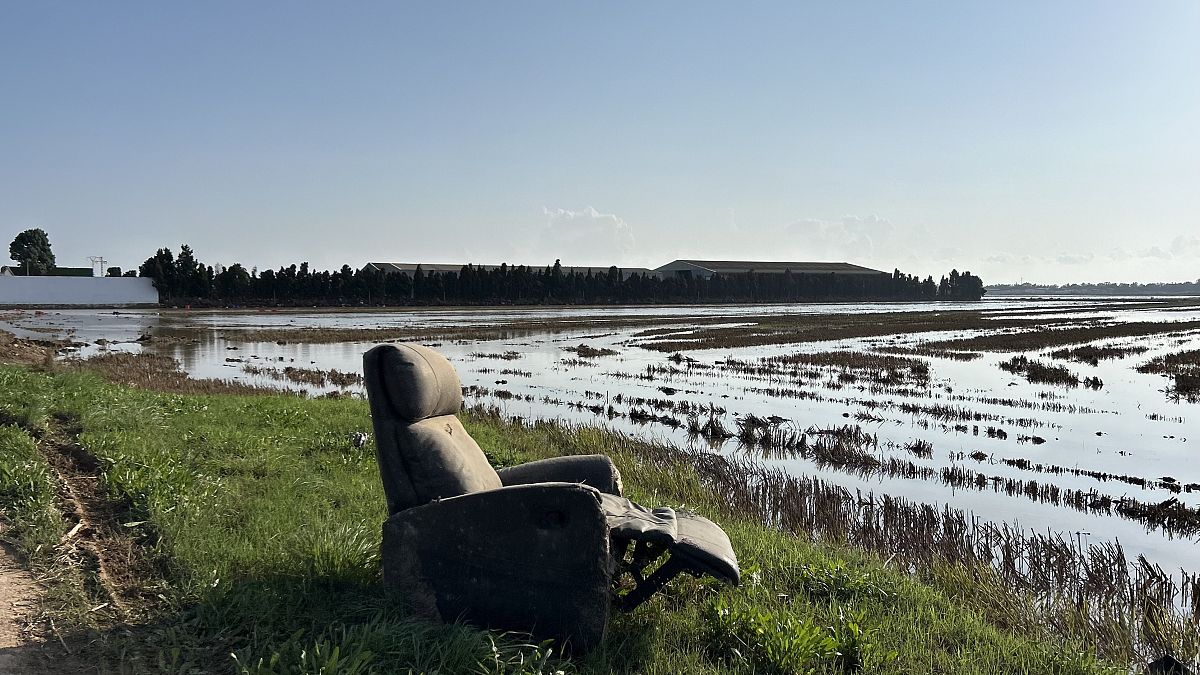Local Albufera experts reflect on the environmental devastation caused by València’s historic floods.
Albufera National Park, one of Spain’s most crucial ecosystems, is another great victim of València’s tragic floods.
Two weeks since the flood, much of Albufera, which comprises an expansive freshwater lagoon, sand dunes, and beaches, has suffered extensive damage. Some areas remain underwater.
The national park’s freshwater lagoon is the largest in Spain and spans more than 2,800 hectares. It provides shelter for up to 300 different bird species and is surrounded by marshes and paddy fields.
Millions of kilos of waste have indeed ended up in this wetland, and dead bodies have been found.
Searches are still continuing to find missing people, particularly along the coast on the beaches, which are still filled with debris.
Albufera’s rice farmers have had their livelihoods devastated
The Poyo ravine, which crosses the town of Paiporta and was devastated by the floods, flows into the park rather than into the sea. The flood dragged much of Paiporta’s waste into Albufera.
“There is a lot of rubbish in the north of the park, not only plastics but also a lot of medicines, fuels, oil, and other things from industrial activities,” explained Javier Jiménez Romo, a biologist and resident of Albufera.
“There are a lot of dangerous substances and liquids that are now mixed with the land where we grow the rice.”
These rice fields usually produce the famous ‘Arroz de València’, the most valuable irrigated crop in the region.
“We have approximately 5000 agricultural holdings in the natural park. I calculated that half of the area of the rice was approximately affected, mainly in the north,” said Carles Sanchís Ibor, president of the governing board of the Albufera Natural Park and a researcher at the Polytechnic University of València.
Some roads and rice fields remain submerged in Albufera.
“It’s probably too early to determine the exact impact there, but what we know is that there are important irrigation, roads, and infrastructure that have been affected by the floods,” added Ibor.
Technicians are now evaluating all the damage, particularly checking for broken pipes that might affect the irrigation system and need to be repaired urgently.
Albufera is equally important to humans and wildlife
The park is considered a Ramsar Wetland of International Importance and has been a Special Protection Area (ZEPA) since 1994.
“This kind of ecosystem is not only nice for nature, birds, and animals…they give us ecosystem services,” shared Romo.
Thousands of visitors visit the park every year.
Pacino, who provides boat tours for tourists, shares his worries as he cleans his boat:
“We were spared this time, but what will happen in the future? What image do people around the world see of our region now? I hope they will still come here.”
Did Albufera’s wetlands act as a defence against València’s floods?
Because of their water retention capacity, wetland environments act as a natural reservoir and have the potential to reduce the intensity of floods.
Yet these floods were the most significant that the park has ever experienced. In 1992, other floods were recorded in the south, but with less intensity and damage.
“We have to take into account that for this kind of wetlands, floods are part of their natural regime”, explained Ibor. “They have an important role in absorbing the impact of floods”.
With València’s recent tragic event, “All this water first crossed urban areas where there were many people, then it crossed the industrial area, and at the very end, it arrived at this coastal wetland, which is just beside the sea,” asserted Romo.
“Thanks to this wetland, El Saler, the hometown of the paella, has been saved”.
Albufera Park is increasingly vulnerable to climate change
Spain is very vulnerable to climate change, and Albufera Park, perhaps, is even more so due to its unique nature.
“We already had some problems with climate change even before this event,” added Ibor.
“We observed a decrease in rainfall in the headwater area of the main rivers, which provides water to the irrigation system.”
“This is reducing the input of water in the park, and with human consumption for agriculture, there is more competition for the water,” he explained.
The rise in temperatures has also complicated the park’s fight against ‘eutrophication’, which is when an overgrowth of plants like algae caused by too many nitrates chokes other plant and animal life.
This can lead to the development of plants that are harmful to rice production.
The rising sea level has also affected the coastal area, increasing the salinity of the ecosystem.
“Every three years, the sea is one centimetre higher,” says Ibor. “So in 30 years, it would be 10 cms. It’s a lot for a system that is only 18 cms difference between the average level of the lagoon and the sea”.
It’s time to adapt, warn Albufera’s experts
Beyond questions of urbanisation and risk management by the authorities, the experts are unanimous that more measures are needed to protect the park, which was also affected by manmade fires earlier this year.
“We are already seeing a lack of structure and resources to manage this protected area,” said Romo.
“Now, after all this disaster, I really hope we put all measures and resources into place, not only to restore the wetland but also to put in place a long-term plan that protects its birds and animals and the people who live around [the park]”, he reflected.
Ibor thinks the only way that practices will be changed is by creating an adaptation strategy:
“We fear new phenomena like DANA. As scientists say, [floods] will increase in intensity but also in recurrence. People are starting to research a variety of rice that’s more adapted to the salinity. We really need to adapt. ”













